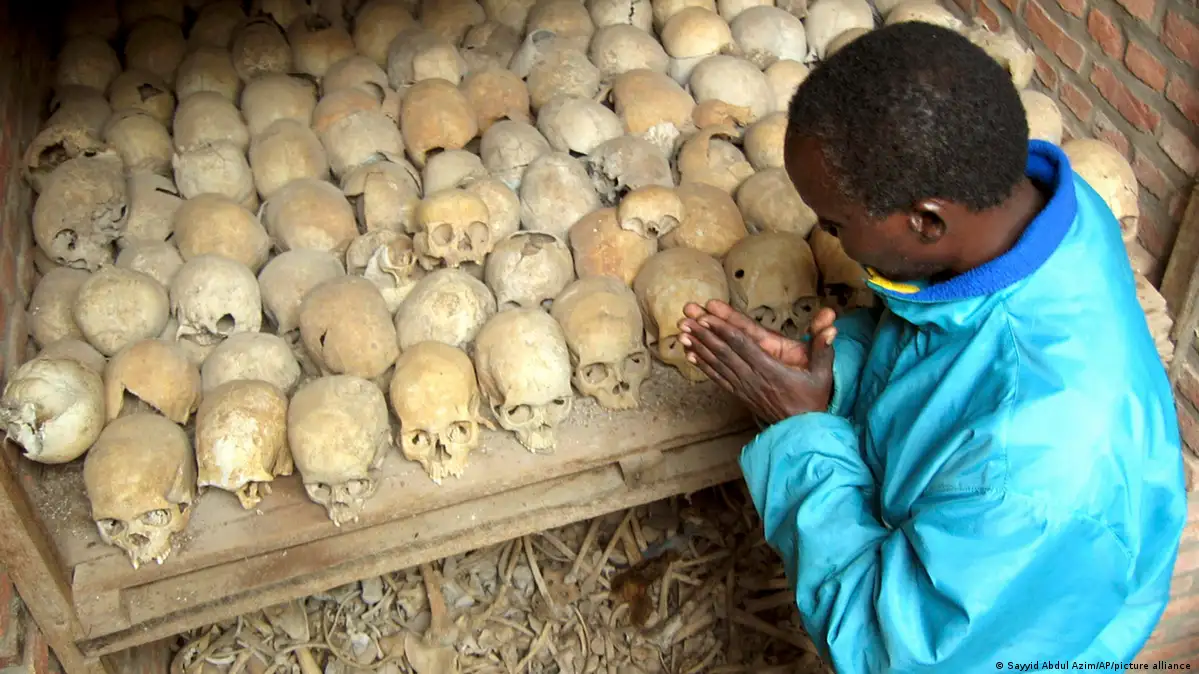April 1994: A plane carrying the president of Rwanda and his Burundian counterpart was shot down over the Rwandan capital, Kigali.
Juvenal Habyarimana and Cyprien Ntaryamira were killed, along with everyone on board. Both men were ethnic Hutus.
The next day the genocide began.
Over 100 days, gangs of mainly Hutu extremists slaughtered hundreds of thousands, mostly ethnic Tutsis, in an attack orchestrated by the Rwandan army and militia. Neighbors turned on neighbors with clubs and machetes.
Thousands headed to churches, many after being offered assurances that they would be safe. But nowhere was safe.Churches were later recognized as the sites of numerous mass killings.
The extreme threat to life pushed masses of people to Rwanda's borders.
Sexual violence was also used as a weapon, with as many as 250,000 women raped during the genocide.
Behind the months of violence was a battle for power between Rwanda's ruling Hutus and the Tutsi-dominated Rwanda Patriotic Front rebel group.
The mass murder eventually came to end when RPF fighters reached Kigali in July 1994, led by Paul Kagame, who would go on to become Rwanda's current president.
In the days that followed, RPF took control of the country, arresting those accused of being involved in the genocide.
In the years since, tens of thousands of Rwandans have been convicted. But hundreds more suspects are still at large.
